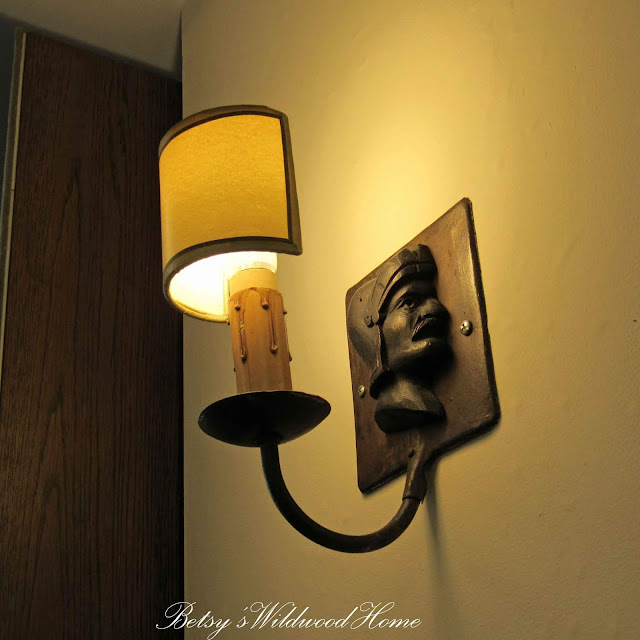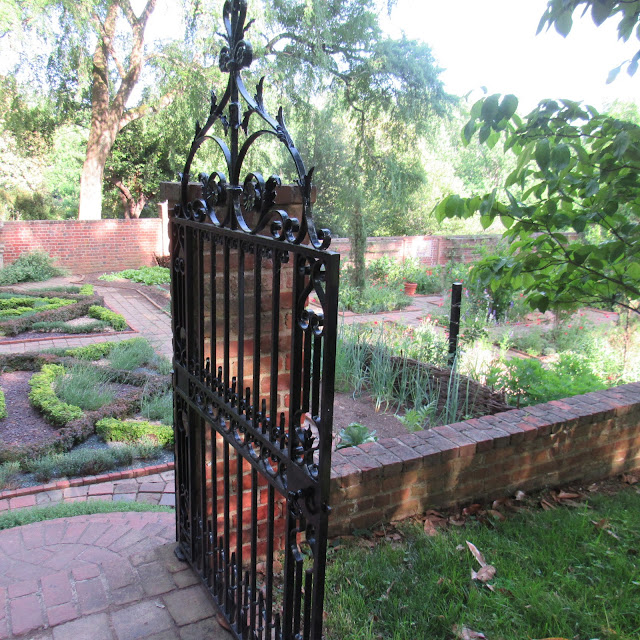Visit to Agecroft Hall recently and some garden pictures
Manor house was actually built in Lancashire England in the 16th century.
In 1925 it was sold at auction.
Thomas C Williams Jr. purchased it. Dismantled and shipped in crates across the ocean to a Richmond Virginia neighborhood, Windsor Farms.
Stepping inside to get tickets
I took this picture because I like the shade, I must find me some.
Wicket door within this large door
Entering the courtyard are 17th century plantings along with the ones we are more familiar with today.
Espaliered Pear trees against the wall.
Hampton Court Palace pond garden in England is what the sunken garden is based on at Agecroft.
The perimeter of the sunken garden are surrounded by boxwood. I would have loved to have seen it in April when 4,000 tulips bloomed in Spring. Summer are pretty annuals.
Mostly white flowers are planted in the garden area now.
I am sure if it was later in the evening, the garden would almost sparkle with the white flowers.
The raised pond has Iris and lilies
Painted carp, turtles and frogs. This area appears about the same as it did when Mr. Mrs. Williams lived here. A 1920's garden
Gabrielle's Trumpets as Mom calls them will bloom such a pretty large trumpet flower and loaded with scent. I know they are poisonous but I like to grow them and grew up with them. Just leave them be and enjoy the beauty. Azaleas are poisonous also, most of us have those too.
To the left of sunken garden is the crepe myrtle walk. Planted in the 1920's with English style structure.
Onto the knot garden - this urn near the garden
Two open Knot design gardens. Typical of a garden dating back 400 years, reading from the brochure.
Herbs are Germander, English Lavender and green Santolina create the knot.
I used to have Santolina growing in my flower bed. It had the prettiest yellow flowers. Dries well. I think mine got too much water as it doesn't require a lot and doesn't need much if any plant food.
Gate to Knot Garden
You can see cabbages and other veggies planted here.
Like these potatoes
Tradescant garden
In honor of John Tradescant. He is the first Englishman to travel here to Virginia. The purpose of visit was to transport botanicals to England.
Rare and unusual plants grow here. A native Virginia plant includes Tradsdecantia Virginiana
or Spiderwort as I have always called it. Lobelia Cardinalis or Cardinal Flower and that is what I have growing in pots at home and at the lamp post. The Hummingbirds love it.
Herb garden
Medicinal, culinary and dye herbs used in the Tudor and Stuart times on display here.
Borage whose blue flowers were eaten to comfort the heart and melancholy
Flower heads of Fennel for seeds to flavor food. Sage, whose leaves were used to treat colds.
In two woven baskets are hops grown for beer making.
Bee skeps in the garden to encourage pollination and a good honey source.
Still house walk. This stone wall has planting growing through the crevices.
The still house is where the lady of the manor would over see the distillation of herbs for culinary and medicinal use.
Sweet smelling scents for the home and perfume were prepared here.
On top of the still house is the Banqueting house
built from timbers left over from the building of the main house
Interpreting as a 17th banqueting house,
wealthy property owners during Stuart and Tudor times would invite their guests for the final course of a meal, sweets dishes.
Inside the banqueting house looking towards the Linden walk.
The trees are little leaf lindens
A method of pruning to cause dense growth called Pollarding.
Typical feature in English garden design
Reading for what comes next in the Linden walk
Here a rectangle is the bowling green
A jack (small ball) is thrown onto the green as a target
larger balls are then played one at a time. The one that is closer is declared the winner
Here you can see the maze. Like the brochure says, Mazes have been know from antiquity to present time.
More later



























Dearest Betsy,
ReplyDeleteWhat a GEM and those gardens, for strolling there and indulging in all their beauty is a dream.
Yep, that 'half' lamp shade is nice, you probably will find it somewhere.
Did not know that most azaleas are poisonous too; for pets and humans that is.
Sending you hugs from far away,
Mariette
My goodness what a wonderful post, you took us on an amazing stroll.
ReplyDeleteBeautiful garden. One visit there will make anyone happy. Love it.
ReplyDeleteYes it does feel good to get out there in that pretty place with all of the history and flowers to see and learn about.
Delete